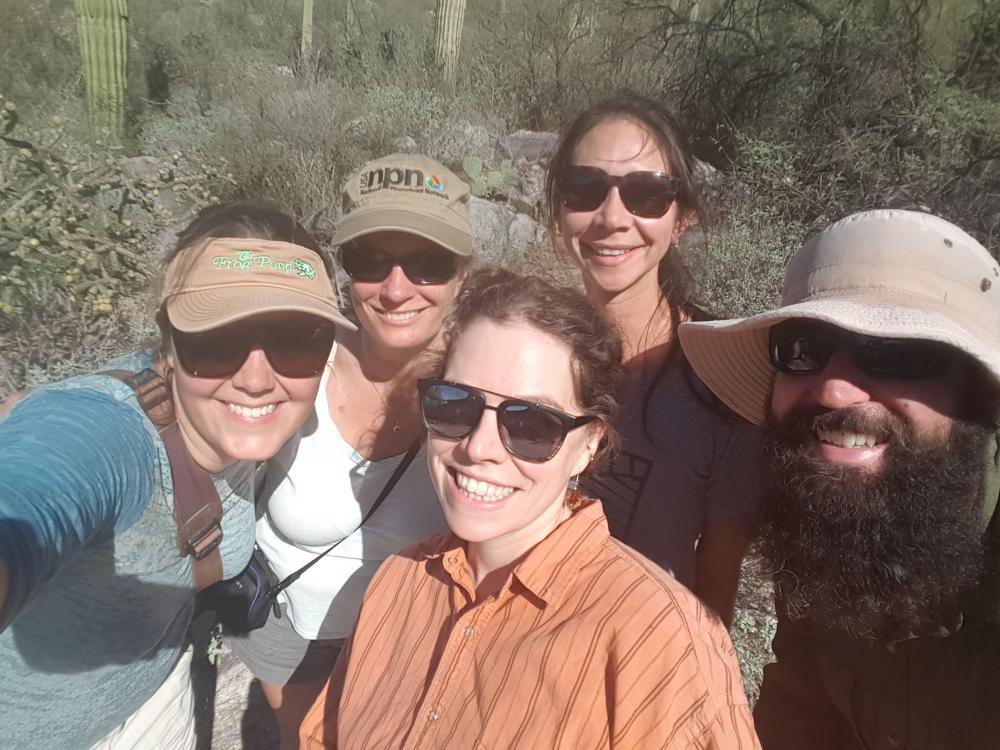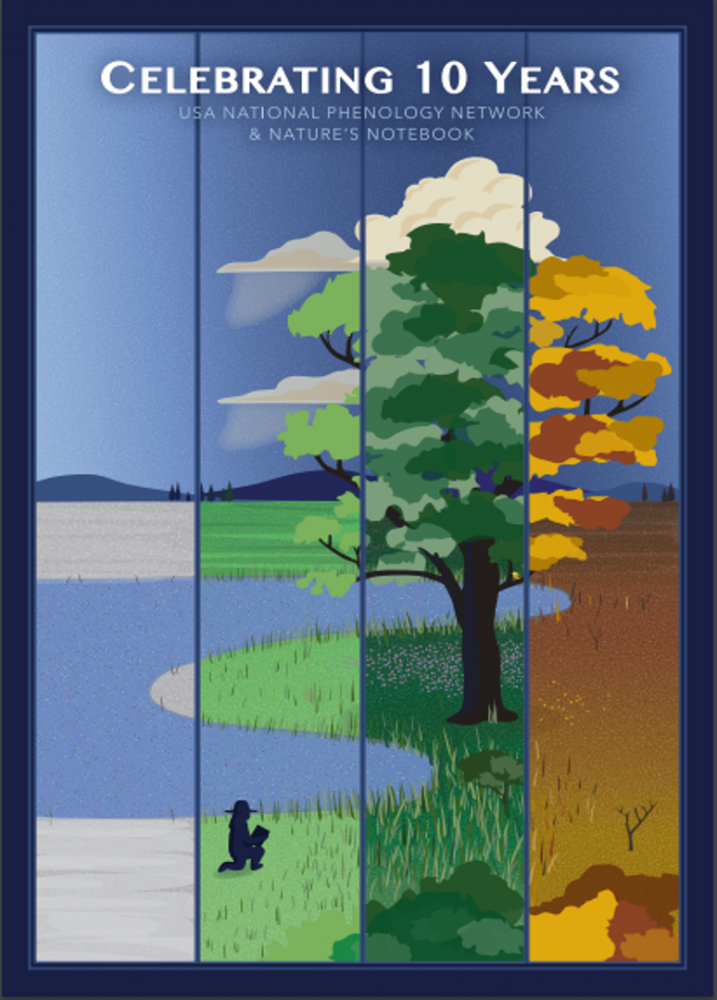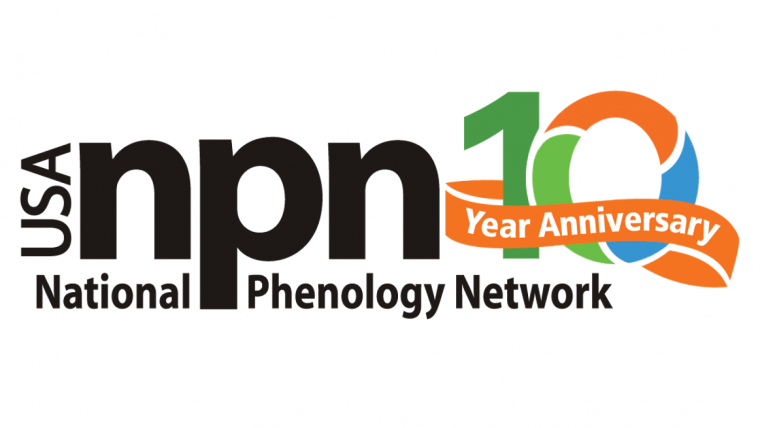
In 2018, we commemorated 10 years of the USA National Phenology Network and data collection with Nature's Notebook.
On October 19th, we brought together USA-NPN partners and Nature's Notebook leaders and observers at the home of the USA-NPN's National Coordinating Office in Tucson. There we reflected on the last 10 years of the USA-NPN and envisioned the next 10 years.
We started the day with a special appreciation event for our Local Phenology Leaders - partners who lead volunteer groups in place-based Nature's Notebook programs. We enjoyed a lovely brunch together at the Tucson Botanical Gardens, where Leaders had the chance to speak about their programs and share ideas with other Leaders conducting similar efforts. We also were treated to a tour of the Tucson Botanical Gardens Phenology Walk, led by Carol Anderson and Laurie Richards, certified Local Phenology Leaders, certified Master Naturalists, and Docents at the Gardens.
The Local Phenology Leaders attending the event included (front row from left to right) Laurie Richards (Tucson Botanical Garden), LoriAnne Barnett (USA-NPN NCO), Sue Wilder (Gulf Coast Phenology Trail), Ceanne Alvine (Watershed Management Group), Jessica Schuler (New York Botanical Garden), Bettina Eastman (Sea and Sage Audubon), Jean Linsner (The 606 Project Chicago), Sara Schaffer (USA-NPN NCO), Carol Anderson (Tucson Botanical Garden), Hilary Cox (Oracle State Park); (back row from left to right) Rebecca Montgomery (Minnesota Phenology Network), Liz Douglass-Gallagher (Rio Grande Phenology Trail), Christy Rollinson (The Morton Arboretum), Blue Baldwin (Manzo Elementary), Susan Mazer (California Phenology Project), Alyssa Rosemartin (USA-NPN NCO), Erin Posthumus (USA-NPN NCO) and Ellen Denny (not pictured, USA-NPN NCO).
An afternoon Symposium held at the University of Arizona's ENR2 building brought together USA-NPN partners, researchers, and friends and colleagues from the University and beyond.
Special 10-year anniversary commemorative posters were presented to the USA-NPN's co-founders Mark Schwartz and Julio Betancourt.
Here are some highlighted quotes from our speakers:
"As we expected all along, the NPN data represent the gold standard for monitoring." Susan Mazer, Professor, University of California, Santa Barbara
"Refuge biologists are seeing a lot of the changes, but they're not necessarily able to document it. And through this work with the USA-NPN and our partnership with USA-NPN we're really able to start really documenting the changes that we're seeing." Sue Wilder, Retired Ecologist, Gulf Zone Inventory & Monitoring/Fire Ecology, US Fish & Wildlife Service
"The work that we do could not be accomplished without us being able to work underneath the National Phenology Network and utilize Nature's Notebook. We rely very heavily on the resources that are developed through NPN and then we tailor them to our specific regions." Elisabeth Maxwell, Assistant Coordinator, UMaine Signs of the Seasons
"The folks studying phenology, even on a citizen science level can really assist us by reaching out to us and working with us because we have a knowledge base that's different from Western thought." Teresa Romero, Environmental Specialist, Santa Ynez Band of Chumash Indians
"Because of the dedication, we've seen over the last 10 years that the USA National Phenology Network is going to be, it's going to continue to be important. And I would say and argue that even more so in the next 10 or 25 years. I think the foundation that's been established is amazing and we've yet to see the results of that." Jeff Morisette, Chief Scientist, National Invasive Species Council Secretariat
"And the other thing that really is needed to make this possible is a professional staff and the people coming together who have made it their career. And so I'm deeply appreciative of that and I really want to thank you for that." Mark Schwartz, Distinguished Professor of Geography, University of Wisconsin-Milwaukee
"It's beautiful to see what has happened in the last 10 years since we hired Jake and opened the offices in 2007 here at the University." Julio Betancourt, USGS, Scientist Emeritus
A reception followed the Symposium event, giving our friends and partners a chance to form new collaborations and discuss ideas related to phenology and the next 10 years of the USA-NPN. The reception featured posters from Local Phenology Programs from across the country, as well as a photo slideshow showing our partners and observers in the field.
See the photo slideshow of observers in the field
We followed up the anniversary event with some special field trips for our out of town visitors - a trip to the Arizona-Sonora Desert Museum and a hike in the Santa Catalina Mountains. Visitors to the Desert Museum had a chance to learn about the unique flora and fauna of the Sonoran Desert. Hikers walked in the steps of a local phenologist who has been recording flowering phenology data for over 30 years in the Santa Catalina mountains.
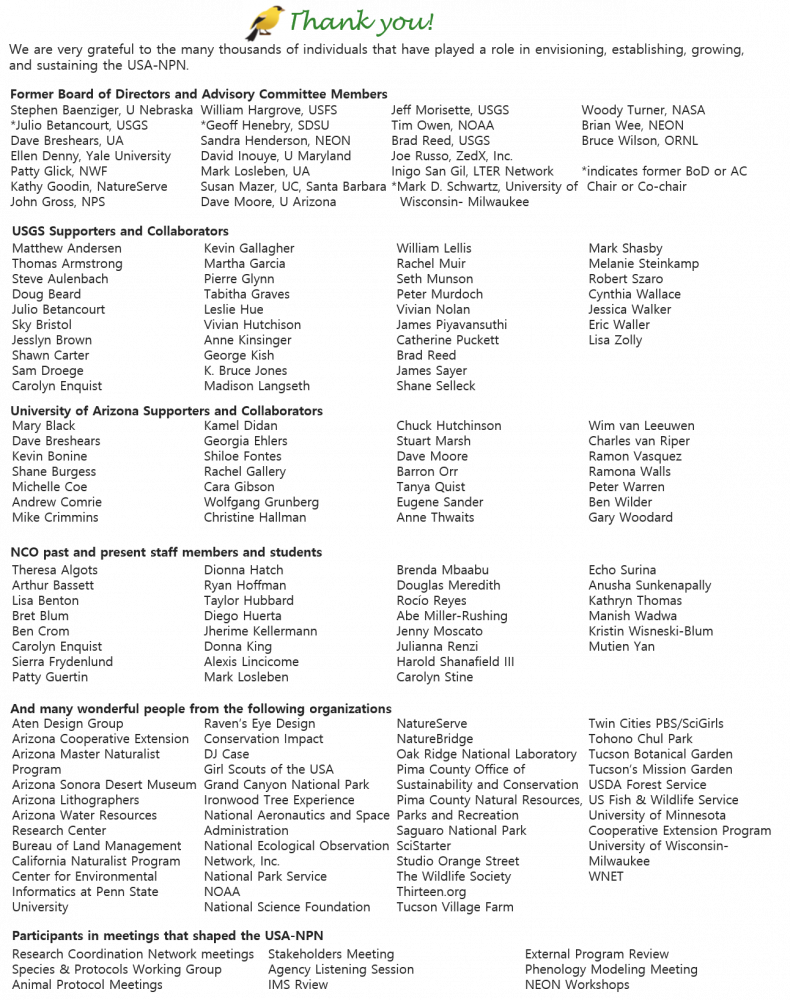
Each month in 2018, we celebrated a different aspect of the 10-year history of the USA National Phenology Network and our Nature's Notebook program.
December
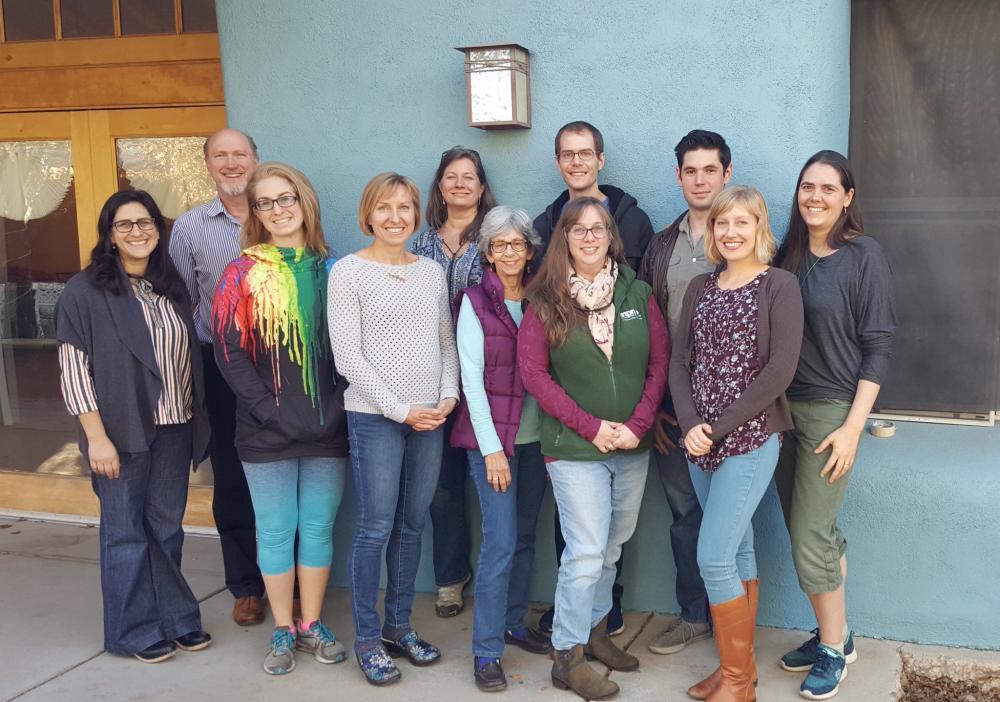
This month, we look ahead to the future of the USA-NPN. Here are some of the things we are cooking up for next year:
- Pheno Forecast maps for at least five new species including buffelgrass, eastern tent caterpillar, and Asian long-horned beetle
- Online Observer Certification Course
- New species to monitor in Nature's Notebook
- Release of updated Nature's Notebook mobile app that will include an animal checklist for quick and easy data entry
- Nature's Notebook campaigns for pest and invasive species to help improve Pheno Forecast maps
- A new and improved Phenology Visualization Tool
- and much more!
November
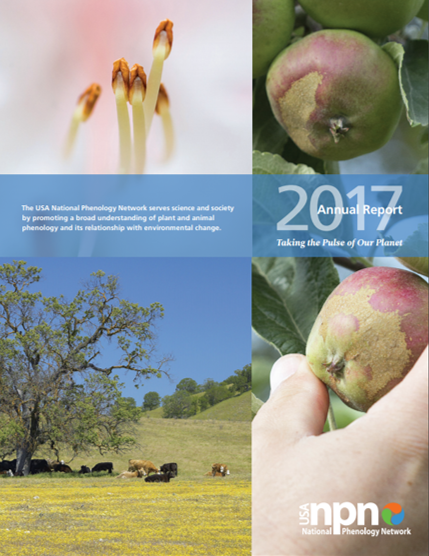
This month, we take a look back at the many accomplishments of the Network over the last 10 years. Our Annual Reports capture stories of how Nature's Notebook data are advancing the field of phenology, how decision makers use USA-NPN data and data products to make more effective decisions, and how Local Phenology Program partners engage local communities in meaningful citizen science experiences. You can explore these stories in our archive of past Annual Reports.
October
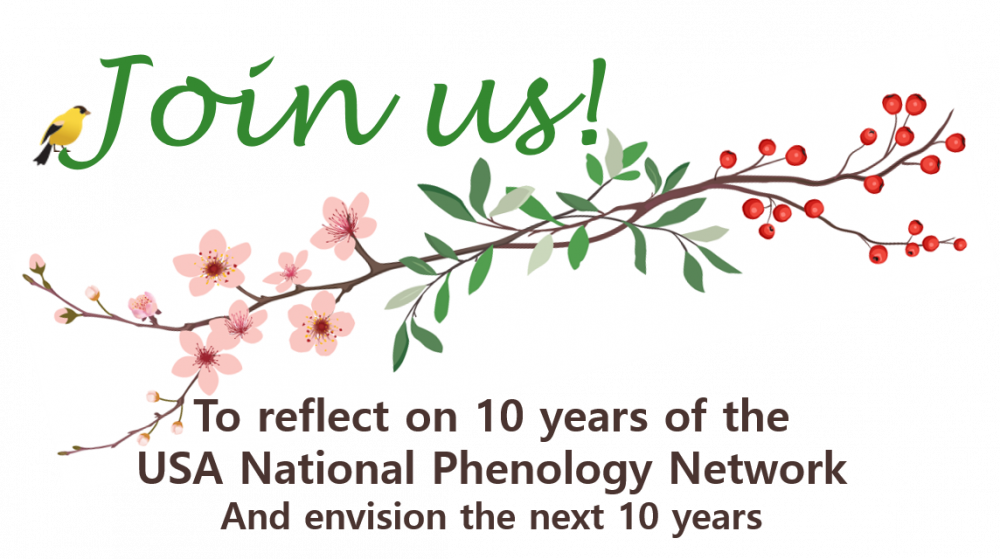
This month, we commemorate the anniversary of the USA-NPN with a reflective event at the home of our National Coordinating Office in Tucson. The event included a symposium with speakers from the USA-NPN, Department of the Interior, and representatives from several of our partners as well as a reception with posters showcasing our Local Phenology Programs. Watch the recording or read more about the festivities.
September
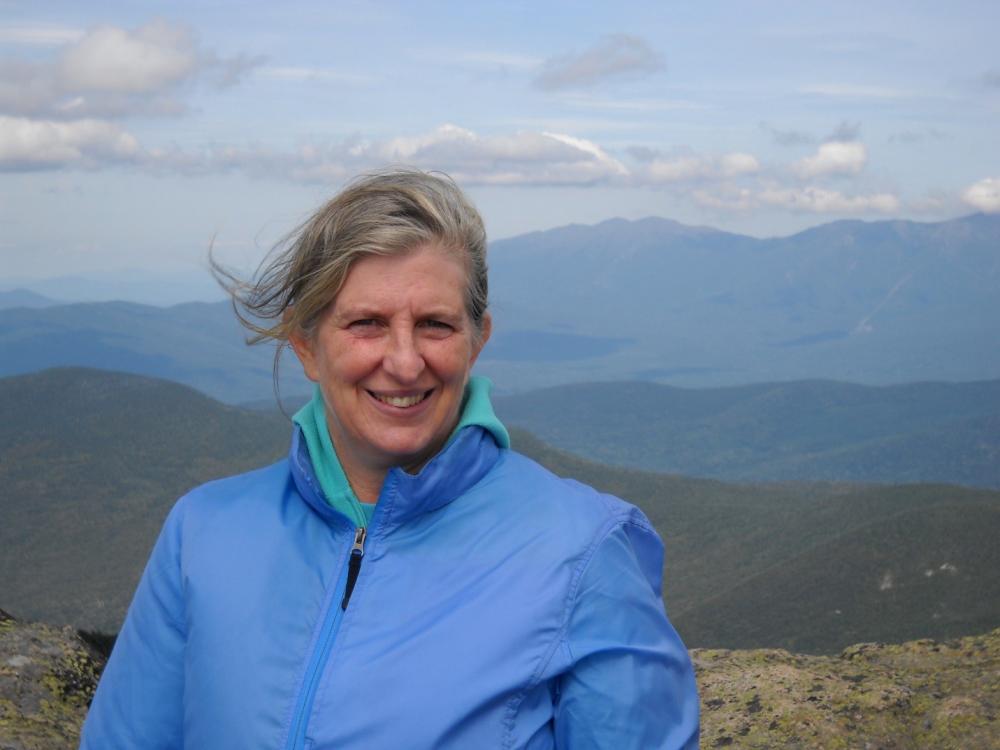
This month we highlight the long-term observers who have participated in Nature's Notebook in each of the last 10 years! There are 30 observers who have reached this milestone so far, including Marjorie Johnson. She keeps careful phenology records of forsythia, dogwood, and red oak, and also notes animals she sees in her yard such as white-tailed deer. Through her many years of observations, she has noticed small details about her plants that she never knew before, such as that a late fall flowering of her forsythia means fewer blooms the following spring.
August
This month we are pleased to share our 10-year anniversary commemorative poster! This poster depicts four seasons of phenological activity centered around a cottonwood tree. An observer is kneeling in a meadow, recording her observations in Nature's Notebook. The poster was created by Cara Gibson, of the University of Arizona's Department of Entomology. The poster was inspired by the Works Progress Administration-style art of the 1930s. There will be several opportunities to receive your copy of the poster advertised in our newsletters this year. Sign up here.
July
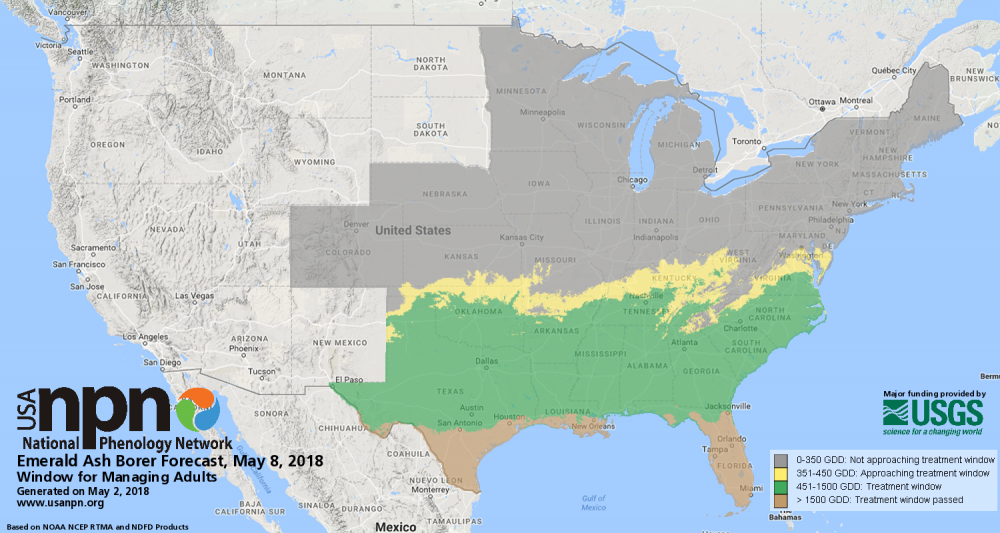
This month we highlight the data and data products managed by the USA-NPN that are used by researchers, managers, educators, meteorologists, gardeners, and other members of the public. Read the results of published research that includes data from the National Phenology Database on our Peer-Reviewed Results page. Explore the data yourself via our Visualization Tool and Phenology Observation Portal. See the Status of Spring maps that provide forecasts of when spring leaf out and bloom will arrive and how this year stacks up to a long-term average. Find out whether pests are treatable in your area with our Pheno Forecasts.
June
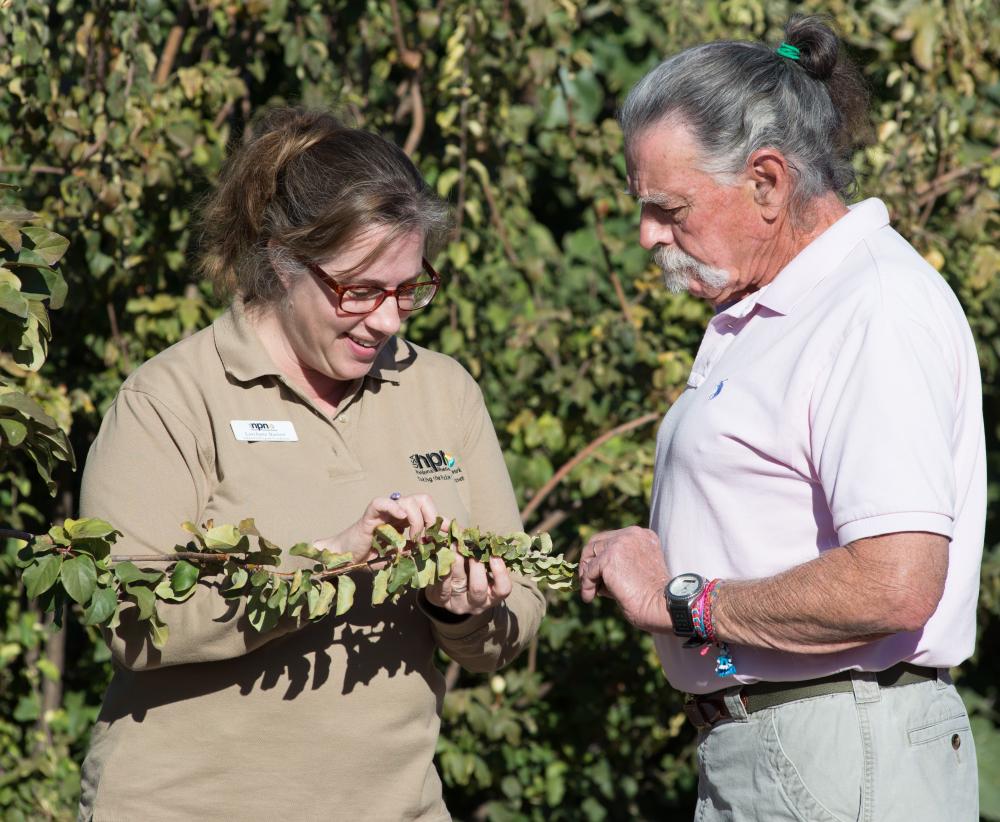
This month we highlight our Local Phenology Leaders. While many people participate in Nature's Notebook as individuals, increasingly more observers participate as part of a group. These groups are led by Local Phenology Leaders (LPLs) who offer training, support, and social events to keep their members engaged and submitting high-quality data. Over 100 LPLs have taken our Certification Course where they learn skills in program planning, volunteer recruitment and retention, and community collaboration.
May
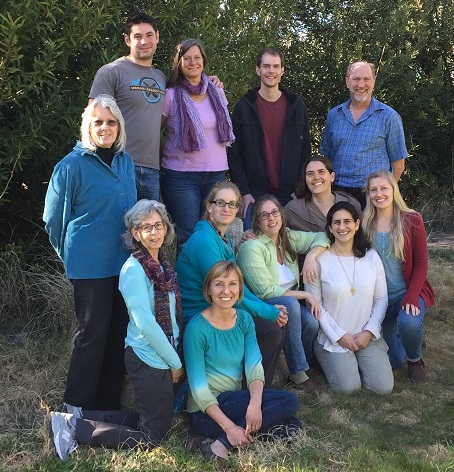
This month we highlight the staff of the National Coordinating Office of the USA-NPN. Since the USA-NPN was established ten years ago, the NCO staff have worked to create phenology monitoring protocols, the Nature's Notebook phenology observation program, summarized data and data products, and a community for learning and sharing about phenology. The 12 current staff, most of whom have been with the NCO since the beginning of the USA-NPN, work closely with hundreds of partners and thousands of observers across the country to achieve the goals of collecting and sharing phenology data and information.
April

This month we highlight two of the many species on which our observers collect data. Red maple is our most frequently observed plant with over 700,00 records and American Robin is our most frequently observed animal with over 190,000 records. Data on these species and over 1200 other species on the Nature's Notebook list are freely available for download and use. Download them from the Phenology Observation Portal or explore them on the Visualization Tool.
March
This month we celebrate the co-founders of the USA-NPN: Dr. Julio Betancourt of the US Geological Survey and Dist. Prof. Mark D. Schwartz of the University of Wisconsin-Milwaukee. Julio and Mark provided the vision for a national network to collect, store and share phenology data. Their work, combined with strong institutional support from the USGS and the University of Arizona and the collaboration of many partner organizations, has shaped the USA-NPN to what it is today.
February
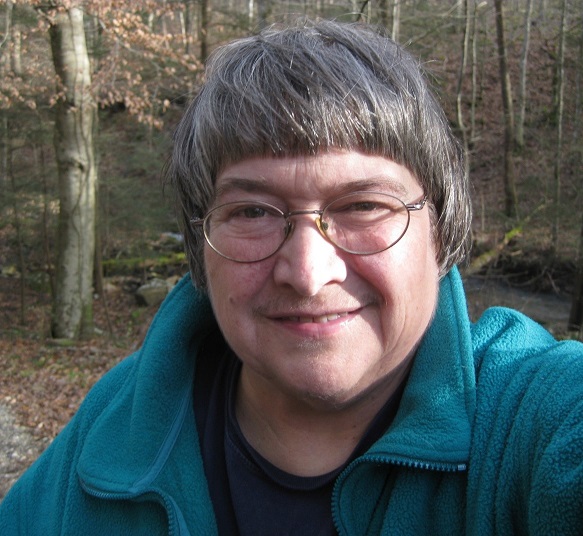
This month we celebrate one of our long-time observers. Cathie Bird has been submitting observations to Nature’s Notebook for all 10 years of the program! At her home in Tennessee, she tracks the phenology of Northern Cardinal, Black-capped Chickadee, and more! Cathie has created a rich, long-term dataset that can show changes in phenology over time. Check out Cathie's blog to learn about her findings.
January
We kick off our 10-year anniversary celebration with special logos to commemorate the occasion! The USA National Phenology Network was established in 2007 to collect, store and share phenology data and information. The Nature's Notebook program was established in 2008 to allow professional and citizen scientists to contribute data to this national effort.


